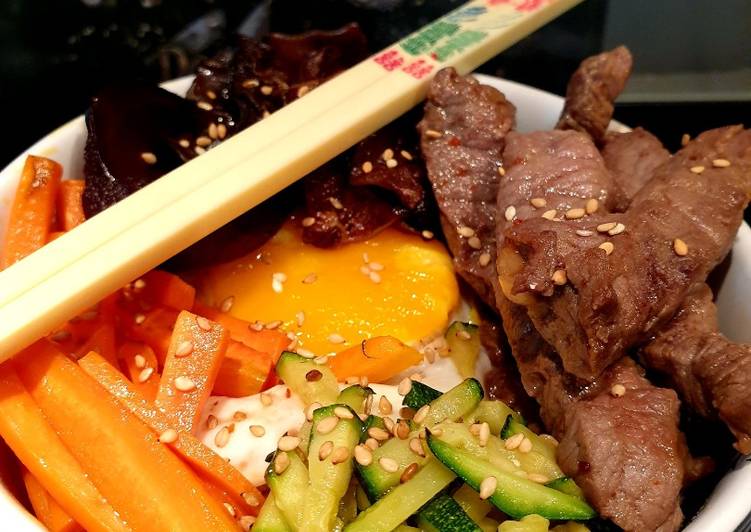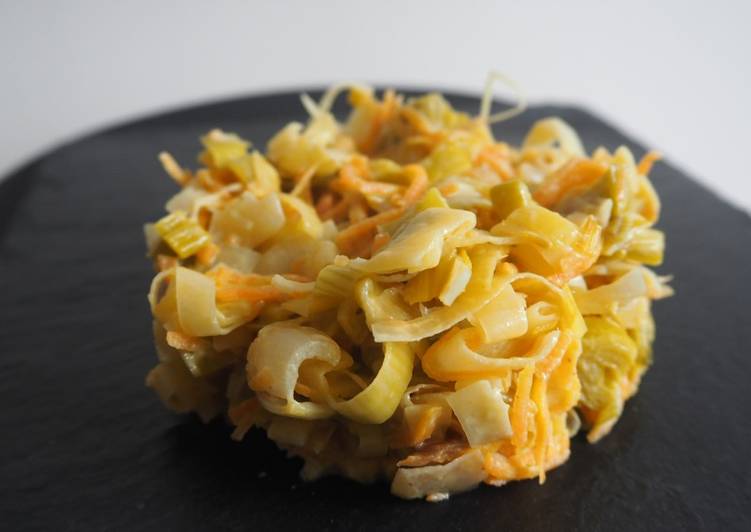
Hello everybody, hope you are having an amazing day today. Today, I’m gonna show you how to make a distinctive dish, bibimbap. It is one of my favorites. For mine, I will make it a bit unique. This will be really delicious.
Пибимпап, пибимпаб, пибимппап, бибимбаб, бибимбап или пибимбап — одно из популярнейших блюд традиционной корейской кухни. Bibimbap (비빔밥) is probably one of the most well-known and beloved Korean Bibimbap simply translates to "mixed rice with meat and assorted vegetables". Carrot, eggs, fernbrake, garlic, ground beef, hot pepper paste, rice, sesame oil, sesame seeds, shiitake mushrooms, soy sauce, soybean sprouts, spinach, vegetable oil, zucchini.
Bibimbap is one of the most favored of recent trending foods in the world. It is simple, it’s quick, it tastes yummy. It is appreciated by millions every day. Bibimbap is something which I’ve loved my entire life. They are fine and they look fantastic.
To get started with this recipe, we must prepare a few components. You can have bibimbap using 14 ingredients and 11 steps. Here is how you can achieve that.
The ingredients needed to make Bibimbap:
- Take 140 g filet de boeuf
- Get 2 oeufs
- Take 60 g riz rond arborio cru
- Get 140 g carotte
- Prepare 140 g courgette
- Make ready 20 g champignons (noirs ou shiitake)
- Get sauce soja salée
- Prepare huile de sésame
- Take ail
- Prepare sel
- Prepare poivre
- Get piment
- Take miel
- Prepare gingembre
When I talk about bowl food, I mean any recipe that consists of a base, such as noodles or rice, a protein, vegetables, and a flavorful sauce. Bibimbap is Korean rice mixed with vegetables and meat. Authentic and traditional Bibimbap recipe with addition info. Also served in hot stone pot - dolsot.
Instructions to make Bibimbap:
- Couper la viande en fines lamelles ou petits morceaux. Il faut que le plat reste pratique à manger avec des baguettes.
- Préparer une marinade avec du gingembre, de l'ail, du piment, de l'huile de sésame, du miel et de la sauce soja salée. Vous pouvez également ajouter du mirin si vous en avez.
- Laisser mariner la viande dans ce mélange au moins 20 minutes.
- Pendant ce temps, cuire le riz comme indiqué sur le paquet.
- Laver et préparer les légumes. Les tailler en fine julienne. Si vous utilisez les champignons noirs, les réhydrater et les cuire selon les indications sur le paquet.
- Dans un wok bien chaud, verser un peu d'huile de sésame et faire revenir les légumes. Attention, chacun leur tour, il ne faut pas mélanger pour garder les saveurs de chaque légume. Les réserver au chaud.
- Dans le même wok, faire ensuite revenir la viande avec sa marinade.
- Commencer à dresser en disposant le riz dans un bol puis les garnitures par dessus en alternant les couleurs.
- Finir par faire cuire l’œuf au plat et le déposer délicatement sur le bol. Vous pouvez aussi le mettre directement sur le riz et les garnitures en dernier (comme sur la photo).
- Optionnel : parsemer de quelques graines de sésame.
- Il n'y a plus qu'à tout mélanger et à déguster !
Bibimbap - it reminds me of Korean Airlines' delicious in-flight meal. The secret to making great Bibimbap everytime is the Gochujang sauce! Along with kimchi, bibimbap takes its place among the favored foods in Korean cuisine. Literally meaning 'mixed rice,' it's a popular meal consisting of white rice topped with vegetables, beef, a whole. Bibim means mixed, and bap means cooked rice, so bibimbap is literally mixed rice.
So that is going to wrap it up with this special food bibimbap recipe. Thanks so much for reading. I’m confident you can make this at home. There is gonna be more interesting food in home recipes coming up. Don’t forget to bookmark this page in your browser, and share it to your family, colleague and friends. Thank you for reading. Go on get cooking!


